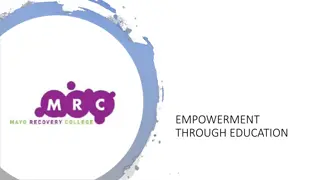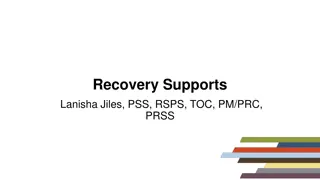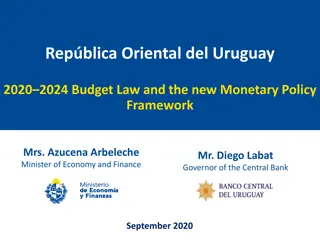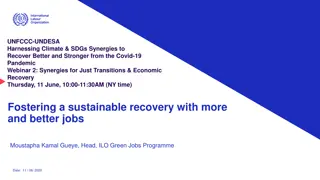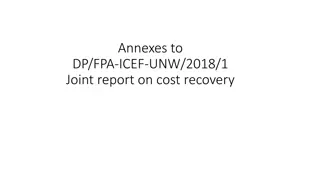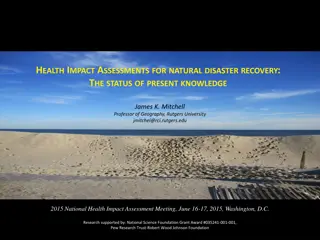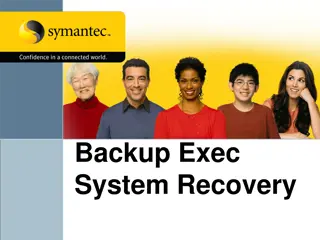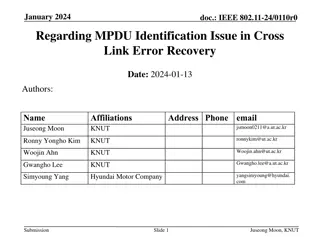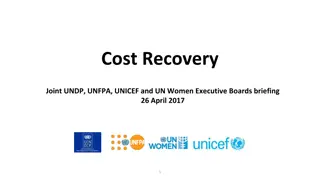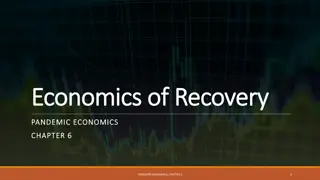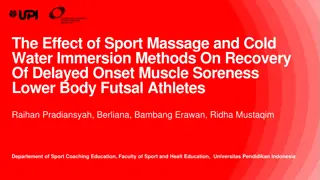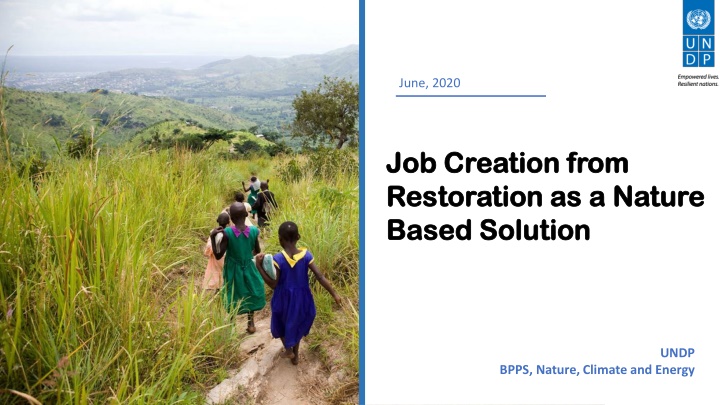
Nature-Based Solutions for Economic Recovery
Immediate job creation through restoration activities like reforestation and removal of invasive species can drive economic, social, and environmental recovery. By incentivizing forest-friendly practices in sectors like agriculture and livestock, countries can create employment opportunities, increase resilience to climate change, and reduce greenhouse gas emissions. Collaboration with financial institutions and government support are essential to implement these initiatives effectively.
Download Presentation

Please find below an Image/Link to download the presentation.
The content on the website is provided AS IS for your information and personal use only. It may not be sold, licensed, or shared on other websites without obtaining consent from the author. If you encounter any issues during the download, it is possible that the publisher has removed the file from their server.
You are allowed to download the files provided on this website for personal or commercial use, subject to the condition that they are used lawfully. All files are the property of their respective owners.
The content on the website is provided AS IS for your information and personal use only. It may not be sold, licensed, or shared on other websites without obtaining consent from the author.
E N D
Presentation Transcript
June, 2020 Job Creation from Job Creation from Restoration as a Nature Restoration as a Nature Based Solution Based Solution UNDP BPPS, Nature, Climate and Energy
Triple Win: Nature-Based Solutions to drive economic, social and environmental recovery Immediate inclusive daily wage jobs or public works on restoration activities, e.g. ecosystem appropriate restoration, reforestation, non-timber forest produce, removal of invasive species, nursery maintenance, etc (1-12 months)* Short - and Mid-term building and strengthening market linkages and supply chains e.g., MSMEs, supporting small holder farmers in adopting climate resilient agricultural practices in farming; (1-5 years) Long -term improved social protection, institution building and enable shift in current policies towards a low carbon economy; addressing co-vulnerabilities of social and planetary health, macroeconomic policies resilient to future shocks, incl. natural disasters, climate change (5+ years) *Important lessons from India s MNREGS, the largest public works program in the world, with over 80 million participants;defer mechanisation to provide more workforce, where needed 2
Example from Paraguay Restoration and forest-friendly agriculture and livestock integration Grain producing farmers and cattle ranchers could be incentivized to diverge from the business-as-usual production and land-use conversion practices and switch to forest-friendly, low-carbon and climate-resilient practices, through low-interest, long-term and flexible credits. This is particularly important for unemployment labours from cities returning to rural farming. Why Important 20% of the population is employed in the primary sector; agriculture and livestock Sector represents 30% of the country s GDP. Scale potential (Brazil, Uruguay and Argentina, and potentiallyin other countries across the world with similar commodities) What is needed: - incentives (low interest rate loans) for innovative productive practices - increasing resilience of productive systems to climate vulnerabilityand carbon sequestration. - GHG emission reduction from avoided deforestationand - political will - subsidies structures - ability of central, development and commercial banks to blend finance to structure flexible concessional finance Key features: financial institution partnerships, grain and livestock sectors 3
Key Overarching Considerations Ensure that temporary activities are linked to more long-term solution for employment. Open doors to develop added value activities. It is key to have a clear methodology to identify demand, so we can help shape the products so they can have an output and generate income for communities. At the macro level, use stimulus packages to rescue industries or economic activities to make catalytic changes. If conditions are tied to the delivery of government grants and loans, a market for sustainable products can be created. For instance, to tie a rescue loan to a hotel by investing in local suppliers of food, etc. (the use of concessional loans in Paraguay are a great example). Rely on the intelligence from the CO to develop feasible ideas. Market dynamics tend to be different in every single country and for every service or commodity . The green commodities programme has a great amount of experience linking market dynamics with commodities production. Ideas must offer a combination of quick-wins and long-term market linkage strategy, underpinned by a specific set of tools and methodologies to support the materialization of the idea. The ultimate goal should be to identify interventions that will improve quality and better bargaining conditions, as well as information. 4
UNDP Integrated Nature, Climate and Energy & COVID-19 PREPARE RESPOND RECOVER Provide support to government partners and setbacks in achievement of project objectives. Identifyand understandrisks and opportunities through diagnostics Leverage NBSs as an engine for resilience and green job creation Prepare for the emergence of zoonic diseases and climate impacts. Identify opportunities to repurpose harmful fossil fuel subsidies towards nature regenerative and climate resilient activities Make evidenced-based public policy and budgetary decisions Advance ecosystem restoration as a driver of job creation Invest in adaptive social protection by diversifying livelihood opportunities, increasing access to markets, and building resilience within climate sensitive sectors. Strategy and policy for clean, reliable & affordable sources of energy for health facilities Engage/empower citizens, communities, and other stakeholders Design stimulus packages that support green jobs, work-for-nature schemes Socio- economic assessments to capture interlinked climate and health co-vulnerabilities Access to energy to provide social protection and enable food storage and access to public health information Shift investments and incentives towards SD pathways Conservation measures to address environmental change and habitat loss Leverage NDC commitments to drive green job growth





